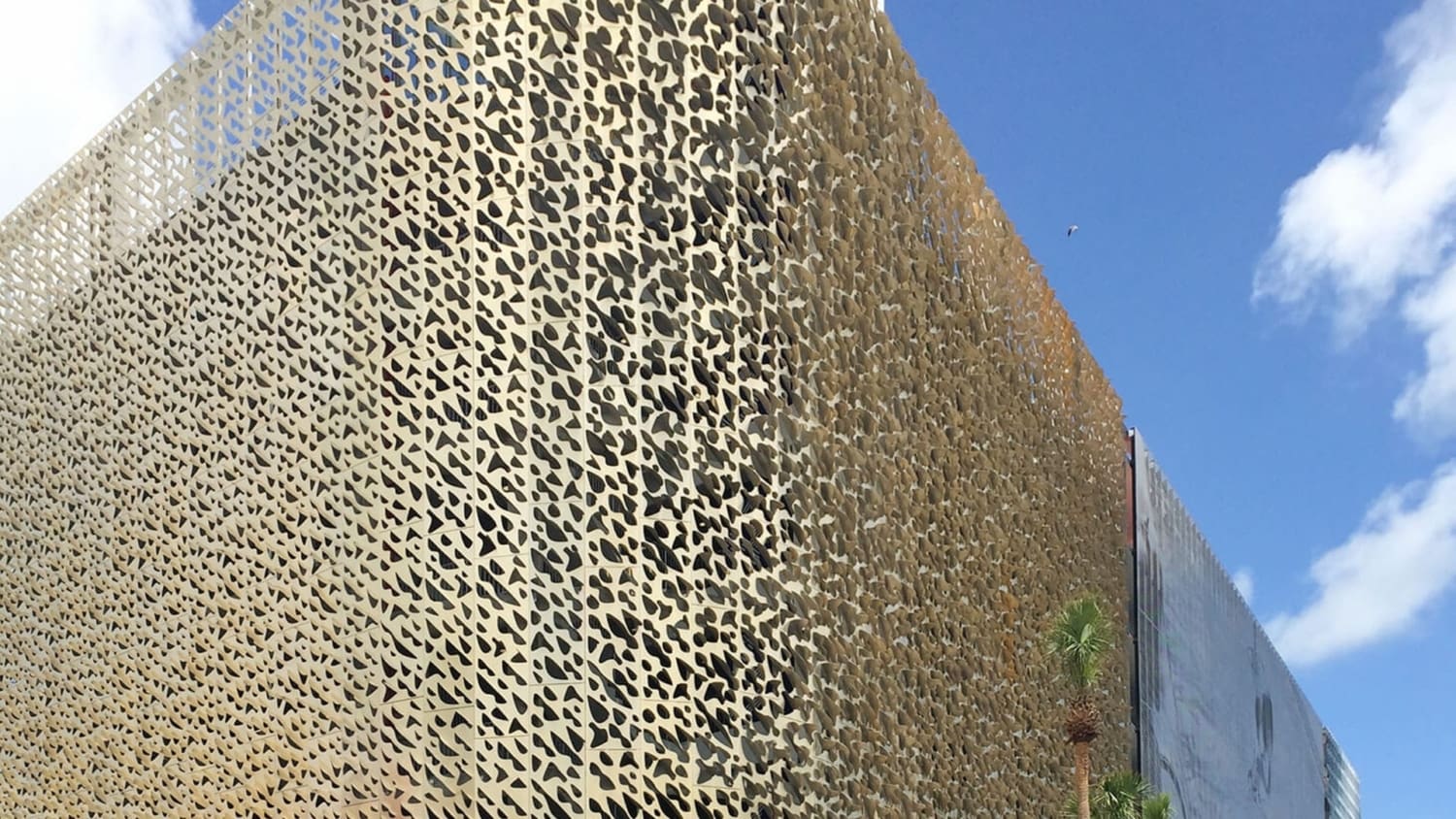City View Garage in Miami’s Design District Features 3 Iconic Facades by Zahner
Completed in 2015, the City View Garage in Miami’s Design District stands as a captivating feature in a neighborhood surrounded by iconic works of architecture. The development was led by Dacra, who, over the years, has transformed the district from an overlooked and stagnant area into a thriving center for commerce and culture.
Zahner was brought on board by the lead architect, Tim Haas, to assist in the design engineering, fabrication, and installation of all three distinct facades on the City View Garage. We worked closely with the featured designers – Leong Leong, IwamotoScott Architecture, and renowned artist John Baldessari – to capture the essence of each unique design in a way that was both functional and impactful.
Miami Design District City View Garage.
Photo Credit Robin HillThe design team views the mockup for Miami City View Garage for the first time.
Photo © A. Zahner Co.From left: Lisa Iwamoto, Chris Leong, Brad Giresi, Bill Zahner, look at material samples in the Zahner library.
© A. Zahner CompanyLeong Leong facade for the Miami City View Garage.
© A. Zahner CompanyLeong Leong Facade
Leong Leong’s facade consists of wave-like shapes with louvered openings that, when seen from inside the garage, create a patterned view of the city. The openings in the facade also maintain natural light and ventilation in the parking structure, while the one-of-a-kind patterns transform this functional requirement into a signature feature. From the freeway, the façade appears as a shimmering mirage, and at street level, the folded fins echo the textural forms of the Miami palms.
City View Garage facade designed by artist John Baldessari using Zahner Angel Hair® Stainless Steel.
© A. Zahner CompanyJohn Baldessari’s “Fun One” Facade
Baldessari’s vision was created using an early iteration of Zahner’s ImageWall technology, which translated the artist’s imagery into a perforated panel system. The original image, selected from Baldessari’s extensive collection of found production stills, portrays three figures enjoying games around a swimming pool and is part of the ‘Post-Studio’ conceptual art movement. Like much of the artist’s work, Fun One features a second element—Fun Two, located around the corner of the building, depicts a similar image of a woman balancing on a beach ball.
Upward view of the IwamotoScott Facade for the Miami Design District City View Garage.
© A. Zahner CompanyIwamotoScott Facade
IwamotoScott met the challenge of avoiding the need for industrial ventilation of the parking area with a modular decorative metal screen design, whose mechanically-folded aluminum system features variously sized apertures to provide the required porosity for natural ventilation. In total, there were five different repeating modules, which were custom-fabricated by Zahner using 40 panel types. The aluminum parts were painted using a gradient coloring scheme, which provides a subtle gradation of its five unique aperture sizes, suspended from fins that cantilever from the edges of the garage’s concrete slabs.













 PHOTO © Tim Hursley
PHOTO © Tim Hursley









 PHOTO ©️ Parrish Ruiz de Velasco (parrch.com)
PHOTO ©️ Parrish Ruiz de Velasco (parrch.com)



 © Fedora Hat Photography
© Fedora Hat Photography Photo by Andre Sigur | ARKO
Photo by Andre Sigur | ARKO





 Ɱ, Creative Commons Attribution-Share Alike 4.0 International license, edited.
Ɱ, Creative Commons Attribution-Share Alike 4.0 International license, edited.


